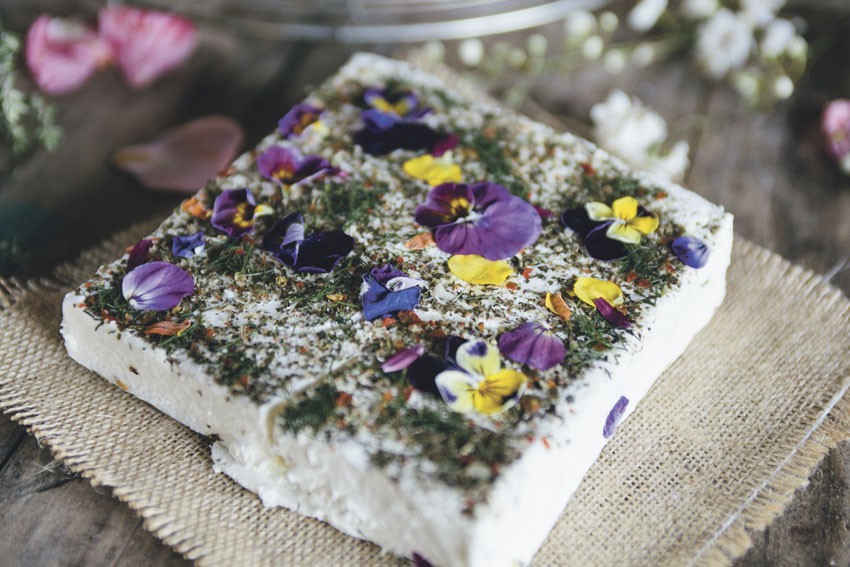Cheese Matters: Spring

There is no doubt about it; spring means excitement is in the air. More sunshine, blossoms bursting and in my world of cheese making, goats kidding aplenty.
The drought of goat’s milk, which begins in late May, comes to a very abrupt end around late August after a gestation period of five months. Once kidding is underway goat milk is literally pouring into the factory, causing much excitement as we dust off recipes, which have been dormant for some months. The range of cheeses we produce at Woodside relies heavily on goat milk. Over a dozen or so cheeses are not produced during this period, due to insufficient milk supply. We have gone to great lengths to establish an acceptance of this natural phenomenon, to educate our customers that cheese is a seasonal food.
We have learnt to make the most of this seasonal aspect in the business and produce a range of cheeses during winter using cow milk, which is readily available. These cow milk cheeses will be matured over a period of six to 12 months, thus creating a cycle. During next year’s goat milk drought we will release the 2012 cow cheeses and begin making them again for the following year. However, we all eagerly await the return of our much-loved goat cheeses. Absence makes the cheese taste sweeter.
The new spring growth in the pastures stimulates milk production as the animals move into a brand new lactation period. This is by far the best time to be looking out for some of the delicate goat cheeses particularly curd and chevre styles. The nature of these cheeses, which are generally made and ready to eat in a day or two, gives cheese makers the opportunity to show off excellent quality spring milk, which has the delicate characteristic of the flowers and young grass shoots in the pasture: Herbaceous, sweet, creamy, with perfect balance of acidity – they are just delightful! Cheeses made from spring milk tend to have a higher moisture content, which means soft surface ripened cheese like our Capricorn or Vigneron will ripen a little quicker.
A little cheese we make called Cabecou (meaning ‘little goat’ in French) is another spring specialty. The tiny goat discs, which weigh around 20 grams, are carefully moulded into shape and matured for around eight days. After this time they are easily handled and are quite the little cheese with perfect creamy texture and an acid balance typical of the style. I like to get around half-a-dozen or so, put them into a good quality olive oil, preferably season dated, such as Coriole EVO – along with whatever seasonal herbs I have in the garden: Rosemary, fennel, bay leaves and a good pinch of freshly ground pepper. I slice up organic garlic, my favourite is hand-harvested from Allisford Farm in Beachport, and toss that into the mix. This needs to be rested in a cool place for around 10 to 14 days, making sure all the cheese is covered with the oil. The Cabecou develops a classic goat cheese flavour, while the herbs and olive oil infuse the cheese leaving it pungent and inviting. Heat some good quality sourdough bread to serve this simple yet rich offering with a glass of South Australian Chardonnay, for a simple aperitif. “Chardonnay?” you may ask. Yes, forget ABC (‘anything but Chardonnay’) – Chardonnay is the greatest and most versatile white variety in the world. My pick is Shaw + Smith’s M3 from the Adelaide Hills. This classic wine works brilliantly with most goat cheese.
The seasons make artisan cheeses interesting. The challenge is for the cheese maker to adapt their skills to the changes in the milk. Husbandry and terroir also play an import role in the flavour, texture and complexity of the final product. There will be plenty of local goat cheeses available over the next few weeks, don’t miss the opportunity to taste them at their very best. South Australia’s many farmers’ markets are one of the best resources for buying ‘in season’ produce. Strict rules on authenticity of origin guarantees what’s in season is what’s for sale. Happy spring!
Kris Lloyd is Woodside’s Head Cheesemaker.